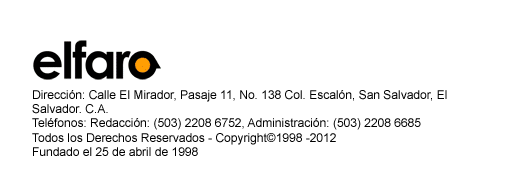CAFTA-DR FIRST YEAR SUCCESS STORIES: MAQUILAS & TEXTILES
Publicado el 24 de Mayo de 2011
id: 121117
date: 9/5/2007 22:33
refid: 07SANSALVADOR1779
origin: Embassy San Salvador
classification: UNCLASSIFIED
destination: 07SANSALVADOR1423|07SANSALVADOR1484
header:
VZCZCXRO9097
RR RUEHLMC
DE RUEHSN #1779/01 2482233
ZNR UUUUU ZZH
R 052233Z SEP 07
FM AMEMBASSY SAN SALVADOR
TO RUEHC/SECSTATE WASHDC 7688
INFO RUEHZA/WHA CENTRAL AMERICAN COLLECTIVE
RUCPDOC/USDOC WASHDC
RUEATRS/DEPT OF TREASURY WASHINGTON DC
RUEHLMC/MILLENNIUM CHALLENGE CORP WASHINGTON DC
RUEHRC/USDA FAS WASHDC
----------------- header ends ----------------
UNCLAS SECTION 01 OF 02 SAN SALVADOR 001779
SIPDIS
STATE PASS USAID/LAC
STATE ALSO PASS USTR
USDOC FOR 4332/ITA/MAC/WH/MSIEGELMAN
3134/ITA/USFCS/OIO/WH/PKESHISHIAN/BARTHUR
SIPDIS
E.O. 12958: N/A
TAGS: ECON, ETRD, EINV, ES
SUBJECT: CAFTA-DR FIRST YEAR SUCCESS STORIES: MAQUILAS & TEXTILES
REF: A. SAN SALVADOR 1484 B. SAN SALVADOR 1423
Summary
-------
1. CAFTA-DR has shown very positive results in El Salvador during
its first year of implementation. Manufacturing is expanding and
diversifying, the local food and beverage industry is booming, and
new investments are arriving to sectors before unexplored. It is the
general view among entrepreneurs that CAFTA-DR has not only opened
new trade opportunities in the U.S. but also has greatly improved
and facilitated the steps and requirements to export to the United
States. During the first year of CAFTA-DR, the maquila and textile
sector alone has received over $260 million in investment and
created more than 2400 direct and 3300 indirect jobs. The maquila
industry has also begun a process of restructuring that will lead to
increased vertical integration and value-added production. Other
sectors will be reported septel. End Summary.
2. Although the Salvadoran maquila industry has been severely
affected by external competition (reftel A), several textile
companies are making or expanding investments. Part of the local
industry is being restructured into production clusters, increasing
the vertical integration of the industry and the value added in
production. For example, before CAFTA-DR, elastics were purchased
in Asia. Now local industry manufactures and supplies elastics,
polyester and nylon fibers.
3. This has led to more sophisticated production processes,
increasing the demand for better qualified and higher paid workers.
The current minimum wage in the maquila industry is $157.25 per
month, but in new maquila-related industries workers earn at least
$400 per month.
4. The maquila sector has also benefited by the World Trade
Organization's (WTO) extension of the use of the Free Zones scheme
in El Salvador until 2015. This gives the sector time to articulate
a new "full package" production policy (reftel B).
5. One example of success is U.S. elastic producer George Moore,
which announced plans to invest and additional $4 million and
increase employment from 294 to 325 by the end of 2007. Peter Moore,
the firm's owner, attributed the expansion to 45% growth in sales
and production since 2005. He said that the quality and
competitiveness of the Salvadoran work force and El Salvador's
proximity to the U.S. gives them an advantage in satisfying urgent
orders.
6. Similarly, Brazilian textile firm Pettenati will invest $95
million in 2007 in a 30,000 square meter production plant in La
Libertad. Pettenati plans to invest $150 million over the next five
years, generating 750 direct jobs. Pettenati chose El Salvador
because of economic stability, geographical location, labor
availability, and the free trade agreements.
7. According to Eduardo Prisco, Ambassador of Brazil in El Salvador,
CAFTA-DR was critical for the Pettenati investment. Petternati will
make elastic fabric, which was not produced before in Central
America. It produces for clients like Puma, Reebok, Adidas, Under
Armour, and Nike. The project will hasten vertical integration and
require a higher level of technology and research processes, which
promises higher paying jobs. The firm is also interested in
creating new firms to supply the local operations, including a
chemical producer and a spinning mill.
8. Other specific examples of new investments or expansion in the
sector during the first CAFTA-DR year include:
-- Cupid Foundations (U.S.) invested in the maquila industry. $5
million, 400 direct and 800 indirect jobs
-- Fruit of the Loom (U.S.) opened a new packaging center. $3.5
million, 400 direct and 800 indirect jobs
-- Asheboro elastics (U.S.) produces knitted narrow elastic fabrics
for the apparel industry. $3 million, 100 direct and 200 indirect
jobs
-- Tom Sawyer (U.S.) operates as a clothing producer under the free
zones law. $2 million, 400 direct and 800 indirect jobs
-- Algodon de Staple, Cotton, y Mallorie Alexander (U.S.) operates
as a cotton bales distribution center under the free zones law.
$500,000
-- Partex (U.S.) expanded its maquila operations. $500,000, 100
SAN SALVAD 00001779 002 OF 002
direct and 200 indirect jobs
-- GARAN (U.S.) expanded its maquila operations. $500,000, 100
direct and 200 indirect jobs
-- Spintex (Canada) produces threads. $9 million, 150 direct and
300 indirect jobs
-- Union Plastics (Korea) operates as packaging materials
distribution center under the free zones law. $200,000
-- Corporacion Rey (Peru) works as a zipper distributor for the
maquila industry. $100,000
9. According to the National Investment Promotion Agency (PROESA),
six textile companies (from the U.S., Guatemala, Brazil, and El
Salvador) invested a total of $132.8 million in the country during
the first semester of 2007. They invested in textiles accessories
distribution, sweaters assembly, and the production of threads,
knitwear cloths, and patterns. Two logistic and distribution firms
from Guatemala and Uruguay also invested $8.5 million during the
same period.
Comment
-------
10. Upcoming cables will report on other sectors that have
increased exports and/or added employees since the implementation of
CAFTA-DR in El Salvador some 18 months ago. These success stories
early into CAFTA-DR are good news, but big issues remain. The
violent crime problem and the 2009 elections loom largest. In
January and March 2009, El Salvador will decide if it wants to
continue on the road to economic modernization or follow the path of
the FMLN and the populist policies espoused by others in the region.
To ensure the continuation of the economic policies we endorse,
Salvadorans must feel that the current government has delivered on
both the economic and security fronts.
Glazer




